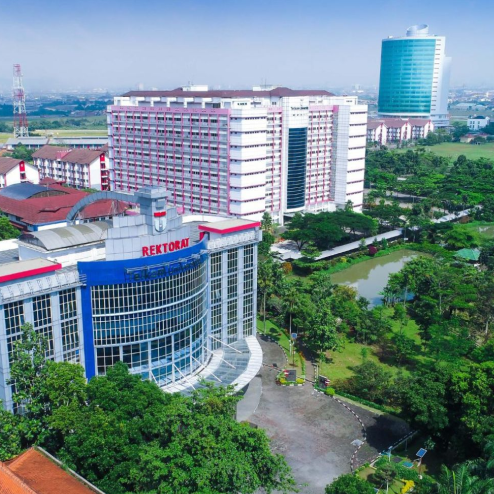Dalam era modern ini, perhatian terhadap lingkungan semakin meningkat, dan konsep green campus atau kampus hijau menjadi salah satu solusi untuk menciptakan lingkungan akademis yang berkelanjutan. Green campus adalah suatu pendekatan yang mengintegrasikan praktik ramah lingkungan dalam pengelolaan kampus, mulai dari infrastruktur hingga kegiatan sehari-hari. Salah satu contoh nyata dari implementasi konsep ini dapat dilihat di green campus Telkom University.
Konsep Green Campus
Green campus tidak hanya sekadar menciptakan ruang terbuka hijau, tetapi juga melibatkan pengelolaan sumber daya alam secara efisien dan pengurangan jejak karbon. Untuk mencapai status sebagai kampus hijau, institusi pendidikan harus memenuhi beberapa kriteria penting, seperti pengelolaan energi, penataan infrastruktur yang ramah lingkungan, dan penyediaan transportasi berkelanjutan. Telkom University telah berhasil menerapkan berbagai inisiatif untuk menjadikan kampusnya lebih hijau dan berkelanjutan.
Transformasi Lahan Kosong
Salah satu langkah signifikan yang diambil oleh Telkom University adalah transformasi lahan kosong menjadi ekosistem hijau yang indah. Proses ini melibatkan beberapa langkah strategis:
- Penanaman Pohon dan Tanaman Hias: Lahan kosong yang sebelumnya tidak terpakai telah ditanami dengan berbagai jenis pohon dan tanaman hias. Ini tidak hanya memperindah lingkungan kampus tetapi juga berkontribusi pada peningkatan kualitas udara.
- Pembangunan Situ Techno: Sebagai bagian dari upaya konservasi, Telkom University membangun Situ Techno, sebuah danau buatan yang berfungsi sebagai resapan air. Danau ini tidak hanya menjadi tempat konservasi air tetapi juga habitat bagi berbagai jenis ikan, membantu menjaga keseimbangan ekosistem.
- Pengolahan Limbah: Telkom University juga mengimplementasikan sistem pengolahan limbah yang efisien. Limbah plastik diolah menjadi paving block untuk infrastruktur kampus, sementara limbah organik dimanfaatkan sebagai pupuk untuk tanaman di sekitar kampus.
- Fasilitas Ramah Lingkungan: Pembangunan fasilitas seperti Green House untuk penyemaian bibit tumbuhan dan Mini Zoo untuk konservasi fauna turut mendukung keberlangsungan ekosistem di kampus.
Manfaat Green Campus
Transformasi lahan kosong menjadi ekosistem hijau di Telkom University memberikan banyak manfaat, antara lain:
- Peningkatan Kualitas Lingkungan: Dengan adanya lebih banyak ruang terbuka hijau, kualitas udara di sekitar kampus meningkat, memberikan suasana yang lebih segar bagi mahasiswa dan staf.
- Ruang Belajar yang Nyaman: Lingkungan yang asri dan tenang mendukung proses belajar mengajar yang lebih efektif. Mahasiswa dapat belajar dengan lebih fokus tanpa gangguan dari kebisingan.
- Kesadaran Lingkungan: Melalui berbagai program edukasi dan partisipasi aktif mahasiswa dalam kegiatan penghijauan, kesadaran akan pentingnya menjaga lingkungan semakin meningkat di kalangan sivitas akademika.
Kesimpulan
Transformasi lahan kosong menjadi ekosistem hijau di Telkom University adalah contoh nyata dari komitmen institusi pendidikan dalam menerapkan konsep green campus. Dengan berbagai inisiatif ramah lingkungan, Telkom University tidak hanya menciptakan lingkungan belajar yang nyaman tetapi juga berkontribusi pada pelestarian alam. Melalui upaya ini, Telkom University menunjukkan bahwa pendidikan tinggi dapat menjadi pionir dalam gerakan keberlanjutan lingkungan di Indonesia.


Leave a Reply